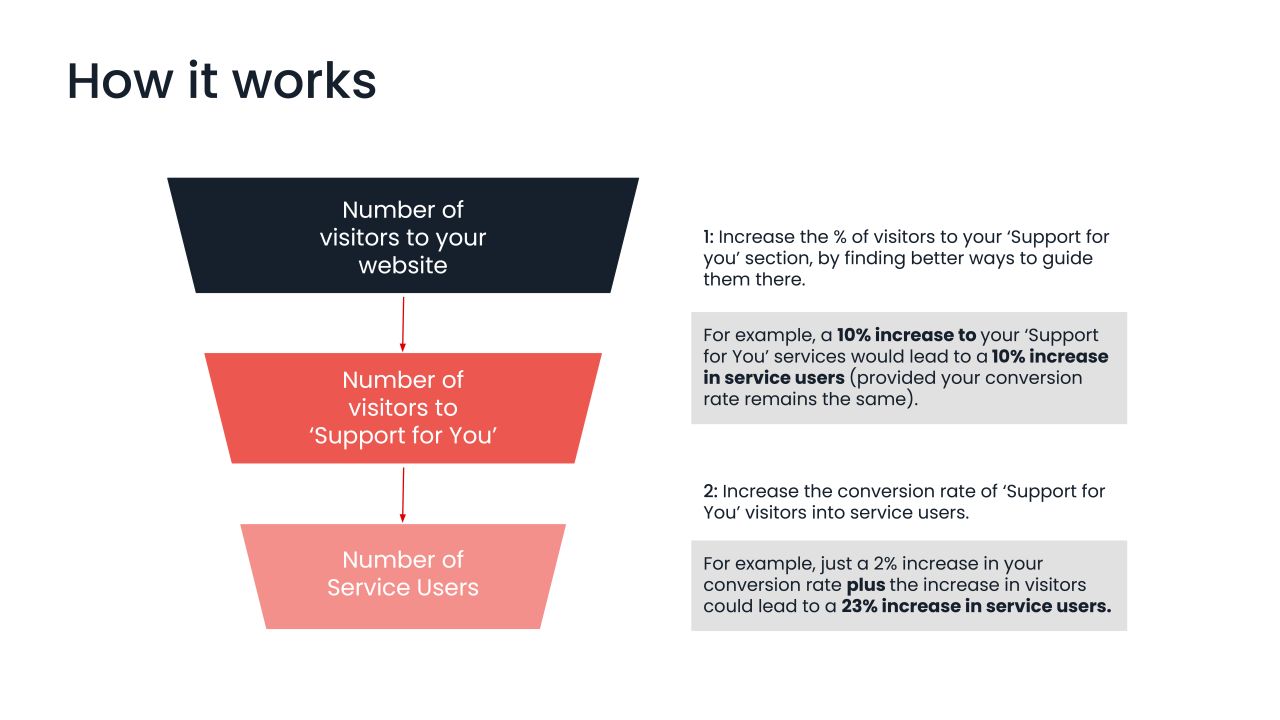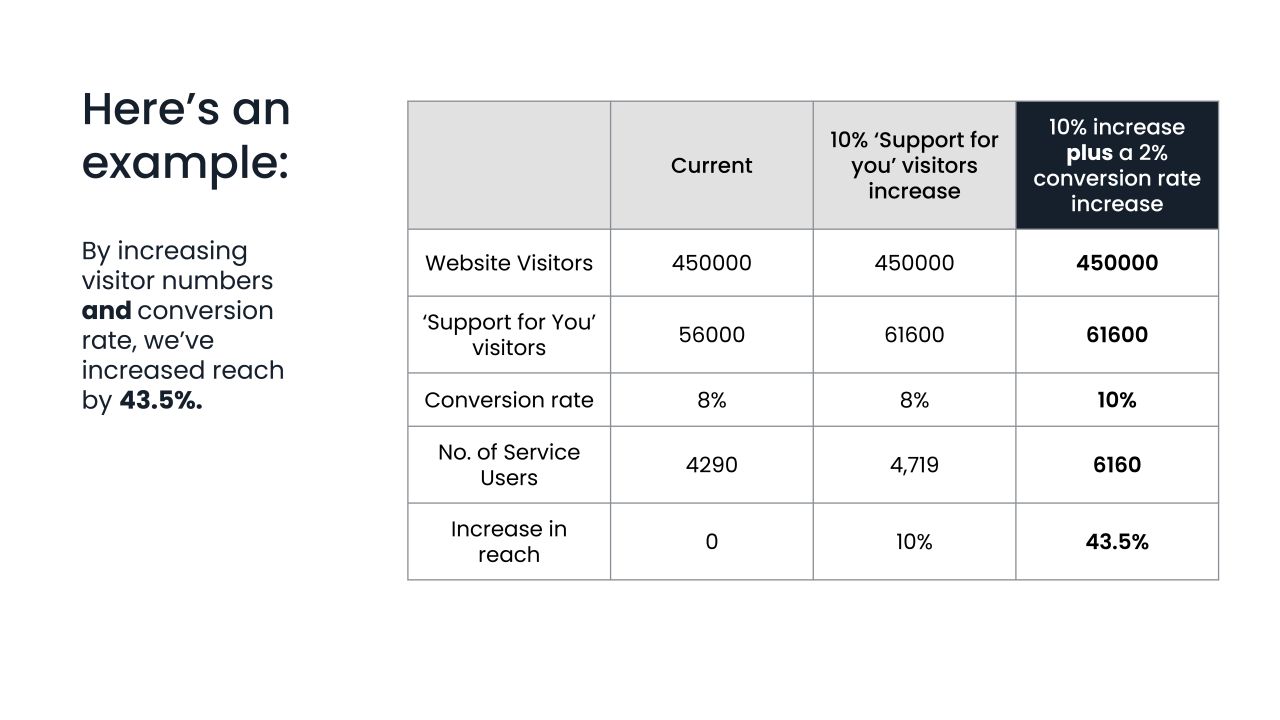
Boost users of your vital services
In an increasingly digital world, the first interaction that many individuals have with charities is through their websites. As the digital storefronts for your organisation, your website plays a crucial role in connecting those in need with your vital support services.
We’ve been talking a lot recently about the challenge of increasing the reach of your services. One of the cheapest, simplest and yet most often ignored ways of doing this is to increase the % of people who come to your website looking for support and end up using a support service. It’s not always about creating shiny new services, or investing in changing the ones you have already.
Improving the ability of your websites to triage visitors effectively — ensuring they find the support or information they're seeking swiftly and efficiently — is not just an enhancement of user experience; it's a critical evolution in how charities can fulfil their missions.
This article delves into the impact this can have on both charities and those they aim to serve.
Enhanced Accessibility
For individuals in distress or urgent need, the accessibility of immediate support is crucial. By optimising the triage process on their websites, charities can guide visitors to the appropriate services without delay. This involves clear navigation, straightforward language, and an intuitive design that accommodates users from diverse backgrounds, including those with disabilities. Enhanced accessibility ensures that help is not just available but also reachable, breaking down barriers between the support services and the people who need them the most.
Increased Efficiency
Budgets are getting squeezed, and the need to deliver more impact with less is a constant. By getting better at triaging visitors on their websites, charities can allocate their human and financial resources more efficiently. Automated tools such as chatbots, detailed FAQs, and self-service options can handle common inquiries and issues, freeing up staff to focus on complex cases or those requiring a personal touch. This not only improves the efficiency of your operations but also ensures that urgent cases receive the attention they deserve promptly.
Simplified Language and Messaging
The ease with which visitors can navigate your website and find the support they need contributes significantly to your credibility and trustworthiness. In most of the user research we’ve done with other services teams, this comes down to what services are called and how they’re described. Many people don’t understand exactly what that service will help them with, or who it’s for. In user research, when we show people services on a charity’s website we often hear them say “that doesn’t sound like it’s for someone like me”. Working directly with your users to co-create better ways to talk about your services, who they’re for, and what problems they can help solve, can significantly increase the number of people who'll end up using them.
Data Collection and Personalisation
Improving the triage process provides you with valuable data on the needs and behaviours of their visitors. This information can be used to personalise the user experience, making it more relevant and engaging. But more interestingly, this data can inform strategic decisions about where to focus resources, highlighting areas of high demand or emerging needs within your community.
Sizing the Potential
So what could this look like in reality?


The potential here is clear and this example could help make the case for exploring ways to exploit it.
Summary
The digitisation of charitable services presents both challenges and opportunities. As charities strive to meet the evolving needs of their communities, improving the triage process on their websites emerges as a crucial strategy. By ensuring that individuals can quickly and easily find the support they need, you’ll not only enhance the effectiveness of their services but also strengthen the bonds of trust and cooperation that underpin your work. In an era where technology increasingly mediates our interactions and support networks, the value of a well-designed charity website cannot be overstated.